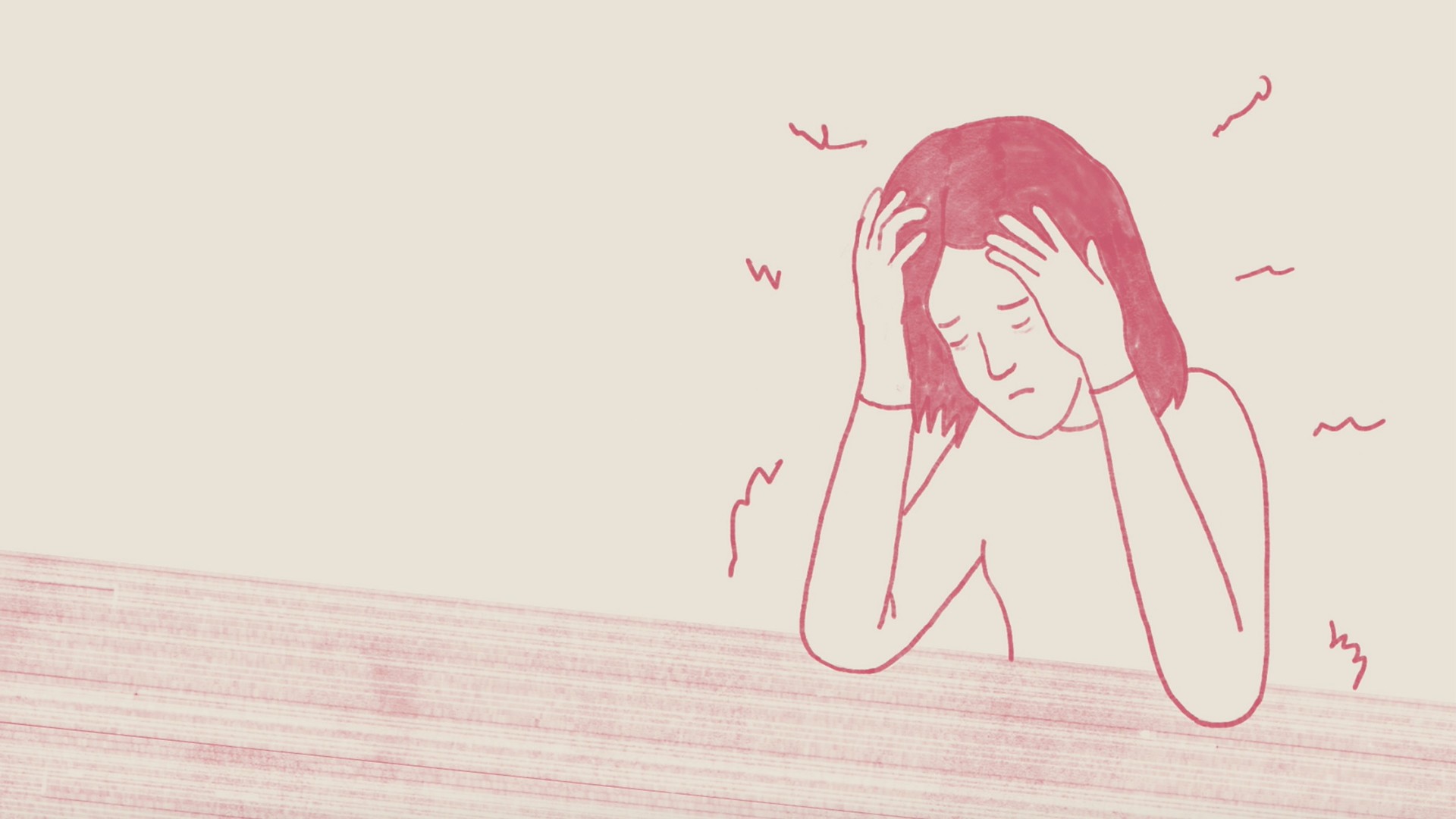Francesco Carta fotografo / Getty Images
The first time it happened, I was eight years old. My father had left our family a few months prior, and after a quick three-month courtship, was slated to marry a woman I barely knew. I had already been experiencing panic attacks and obsessive thoughts, most of them about getting in trouble at school. I was constantly convinced I had done something terribly wrong, even though I was a model student. It made no sense, but neither did much about my life then.Then, during a school field trip to the local juvenile detention center (this was an actual trip we took), I began to feel as though I was floating out of my body. My feet were sweating in my slip-on shoes, and my heart was racing. But I didn’t feel anxious exactly. It felt like I was dreaming. And the problem was that I couldn’t snap myself out of it; I was locked inside the dream, which was starting to feel more like a nightmare.Throughout my childhood and adolescence, I had many moments of slipping into that detached, dream-like place, though never quite with that intensity, and always relatively briefly. But fast forward 22 years after the first incident, and I found myself stuck in that dissociated state for an entire summer.I was a new mom to a toddler son, and my anxiety was at an all-time high (looking back, I think I was living with an untreated case of postpartum anxiety). Then, within the same week, I miscarried a baby I didn’t know I was pregnant with; and a few days letter, my son passed out while taking a bath. For the five minutes that he lay limp in my arms—before he came to, and before the paramedics arrived—I was convinced he was dead.Everything was fine in the end. I recovered from the miscarriage, the doctors said my son merely had a vasovagal syncope episode (the doctors theorized that he fainted when I’d switched the bath water abruptly from hot to cold) and was otherwise healthy. But the experience left me traumatized. All I saw was loss and more loss, the potential for all that you hold dear to vanish instantly, right before your eyes.For that entire summer, I was rattled. I experienced daily panic attacks, something I’d experienced on and off my entire adult life. After a decade of therapy for panic disorder under my belt, I knew how to identify the attacks, and had tools for coping. But for the first time, that other aspect of trauma that I’d sometimes experienced—the feeling of dreamlike detachment—began to take over.I remember standing at the pool, watching my husband and son splashing around. I convinced myself that they weren’t mine—that I had nothing to do with their lives—and the idea that I ever did was a huge lie. The whole world felt fake, and I began to think about the universe, how we don’t really know if it ever ends, that there are definitely galaxies beyond this one. It felt like what I was seeing as reality could likely just be a dream sequence I was creating as I went along.My family didn’t notice, for the most part. At times, I seemed distracted, but I didn’t come across as anxious or distressed. Most of what was going on was happening completely in my head. I would spiral into this existential, disconnected state throughout the day, and the further I sank into it, the more frightened I became. I knew, on some level, none of it was actually a dream. But I also knew that I couldn’t stop the thoughts from coming. It was this awful loop of dissociation followed by panic, on repeat.
More from Tonic:
I had stopped seeing my therapist soon after my son was born (brilliant move, huh?) because I thought I’d been feeling okay, and it had been really hard to keep my appointments while juggling full-time motherhood. I was scared to go back, because I was convinced that these new symptoms meant I was surely losing my shit.But once I finally got myself into her office, and described what was happening, she was able to diagnose me fairly quickly. “You’re showing symptoms of depersonalization disorder,” she said, explaining that it’s common after someone has experienced a trauma like I had (my miscarriage and what I'd perceived as my son's life in danger), and it that it sometimes goes in tandem with panic attacks.It was incredibly validating to learn that I wasn’t, in fact, losing my mind, and that there was a name for what I was experiencing. And once my therapist linked my experience to trauma, it all made a little more sense. This was the beginning of my healing. As I reflect on the experience and research the disorder further, I’ve learned that trauma—especially emotional trauma—is a classic trigger for the disorder.“It is believed that interpersonal trauma, particularly emotional trauma, may lead to depersonalization later,” Gail Saltz, a psychoanalyst and associate professor of psychiatry at the NY Presbyterian Hospital Weill-Cornell School of Medicine, tells me. “Commonly abuse in childhood, but also an episode of depression, or another type of interpersonal trauma can cause this,” she says.Saltz explains that depersonalization disorder (also known as derealization disorder) is actually not in the same family as anxiety disorders, but is what's called a dissociative disorder. However, the disorder itself can trigger anxious feelings for those who have it, much like I’d experienced. Still, others may end up not feeling anxious at all, but rather numb or depressed.As much as I felt disconnected from reality during these instances, Saltz explains that depersonalization disorder is not a psychotic disorder at all. “This happens to 1 or 2 percent of the population and likely more have experienced it at least once,” she says.I wish I’d known about these stats years ago. Although I had discussed “out of body” symptoms once or twice in the past with my therapist, it was only that summer, when it became a prolonged, debilitating problem that it made sense for her to diagnose me with the disorder.Depersonalization disorder is usually only diagnosed when the symptoms become chronic, says Erin K. Engle, a clinical psychologist and assistant professor of medical psychology at Columbia University Medical Center. “Although people may have these symptoms fleetingly at some point,” Engle explains, “Depersonalization or derealization disorder is diagnosed when these symptoms keep occurring—lasting hours, days, weeks, or months—and are distressing, significantly interfering with a person’s daily life and functioning.”Looking back on that summer, I wonder if I could have prevented the whole thing from getting worse if I’d begun treatment sooner. The fact that I was afraid I was having a psychotic episode was a huge deterrent, and why I waited that whole summer to make the appointment. I was more terrified of being labeled “crazy” than anything else.Being afraid of the stigma or repercussions is an experience all too common for people with the disorder, says Paula Panzer, psychiatrist and chief clinical and medical officer at the Jewish Board of Family and Children’s Services. But that awareness—the fact that you are grappling with whether you are “going crazy” or not—can be the litmus test to prove that you are not, in fact, having a psychotic episode.“While depersonalization can feel like you are going crazy—and it is incredibly uncomfortable—you don’t lose an ability to do what we call ‘reality testing,’ which is one of the ways mental health practitioners assess for the presence of psychosis,” Panzer tells me. “The individual can self-assess by checking in with themselves about who they are, where they are, what day and time it is, what they were just doing and who is around them.”The good news, Panzer says, is that like panic disorder, depersonalization disorder is very treatable, most often with trauma-specific psychotherapy. During my first session back in therapy, and for several more to come, we discussed trauma—not just the trauma I’d experienced in the weeks leading up to the emergence of my depersonalization disorder—but also about, well, all my traumas. My childhood traumas got rehashed, and we discussed how my fears about motherhood, loss, and marriage were tangled up in all that muck.A few months later, those episodes of depersonalization, along with the daily panic attacks, began to diminish. And though I don’t currently experience full-fledged depersonalization disorder, I still find myself going into that dissociative state during stressful times. I can almost feel myself doing it to myself, testing the waters to see if I will sink into it again, like a self-sabotaging, masochistic game I play.But since that awful summer, I have only experienced glimmers of the deepest darkness. Knowing that it has a name, that it’s treatable—and most importantly, that I’m not “going crazy”— stops me from plunging all the way in.Sign up for our newsletter to get the best of Tonic delivered to your inbox weekly.
Advertisement
Advertisement
More from Tonic:
Advertisement

I had stopped seeing my therapist soon after my son was born (brilliant move, huh?) because I thought I’d been feeling okay, and it had been really hard to keep my appointments while juggling full-time motherhood. I was scared to go back, because I was convinced that these new symptoms meant I was surely losing my shit.But once I finally got myself into her office, and described what was happening, she was able to diagnose me fairly quickly. “You’re showing symptoms of depersonalization disorder,” she said, explaining that it’s common after someone has experienced a trauma like I had (my miscarriage and what I'd perceived as my son's life in danger), and it that it sometimes goes in tandem with panic attacks.It was incredibly validating to learn that I wasn’t, in fact, losing my mind, and that there was a name for what I was experiencing. And once my therapist linked my experience to trauma, it all made a little more sense. This was the beginning of my healing. As I reflect on the experience and research the disorder further, I’ve learned that trauma—especially emotional trauma—is a classic trigger for the disorder.“It is believed that interpersonal trauma, particularly emotional trauma, may lead to depersonalization later,” Gail Saltz, a psychoanalyst and associate professor of psychiatry at the NY Presbyterian Hospital Weill-Cornell School of Medicine, tells me. “Commonly abuse in childhood, but also an episode of depression, or another type of interpersonal trauma can cause this,” she says.
Advertisement
Advertisement
